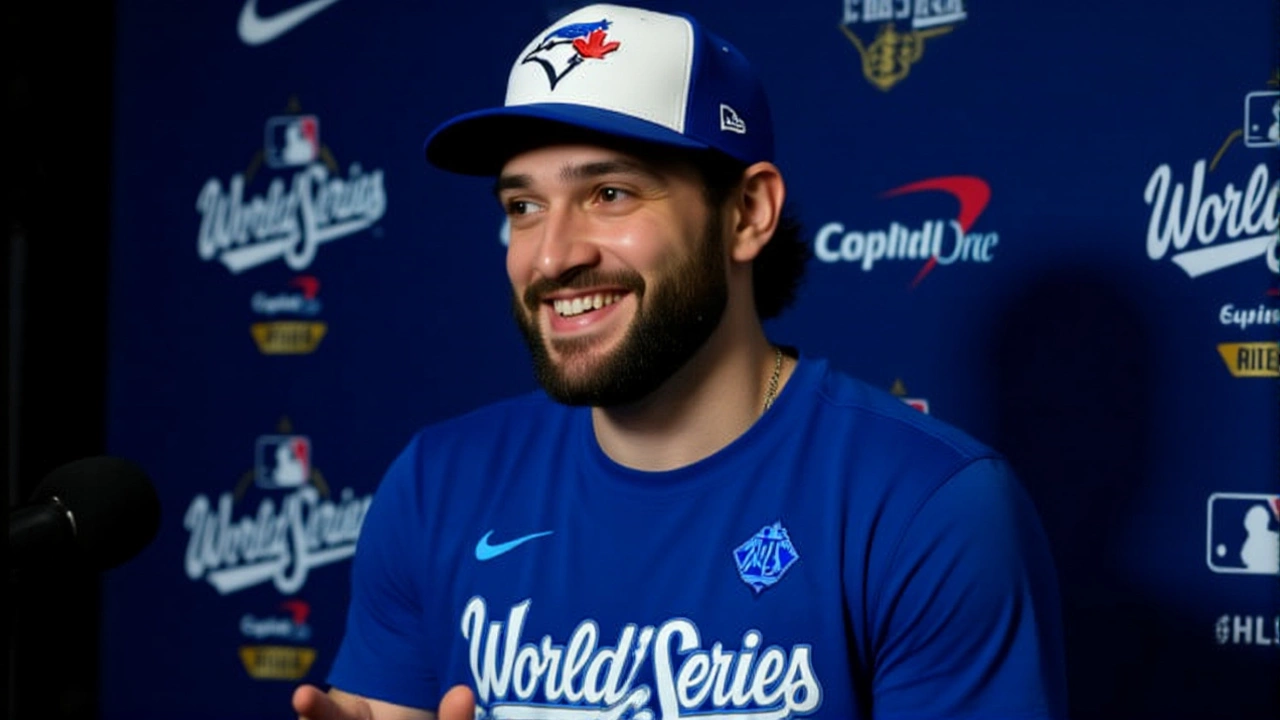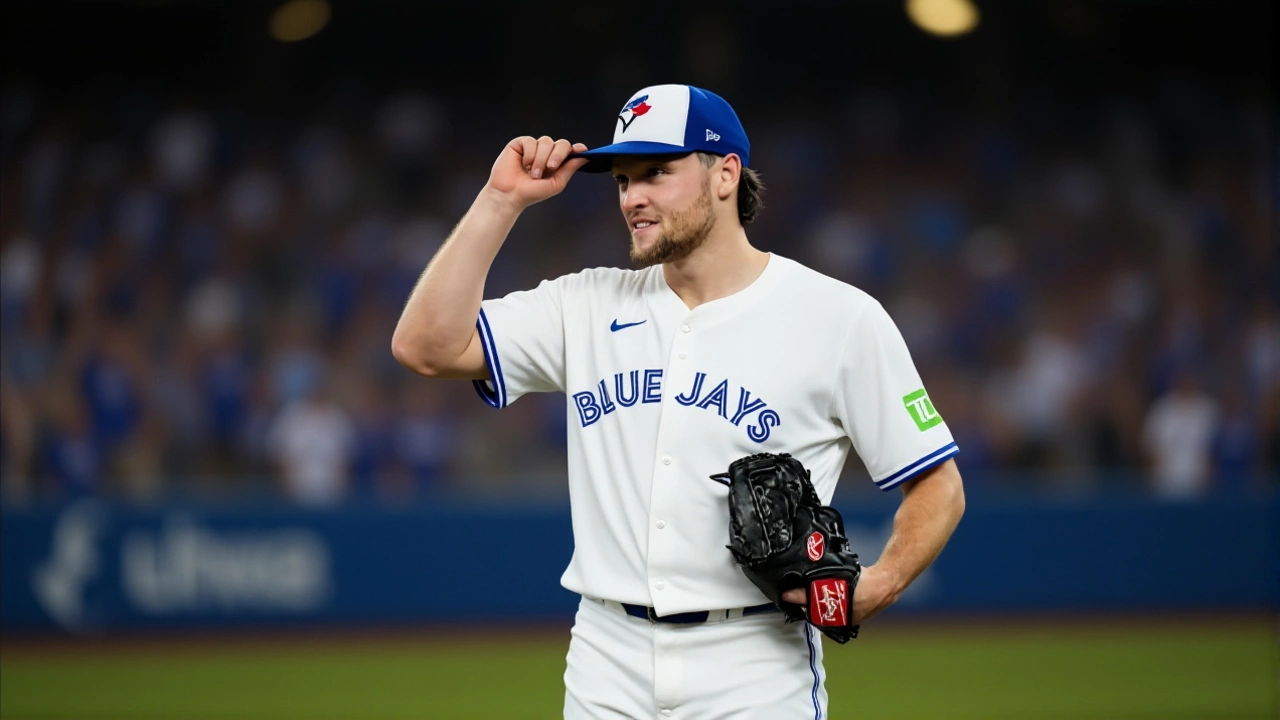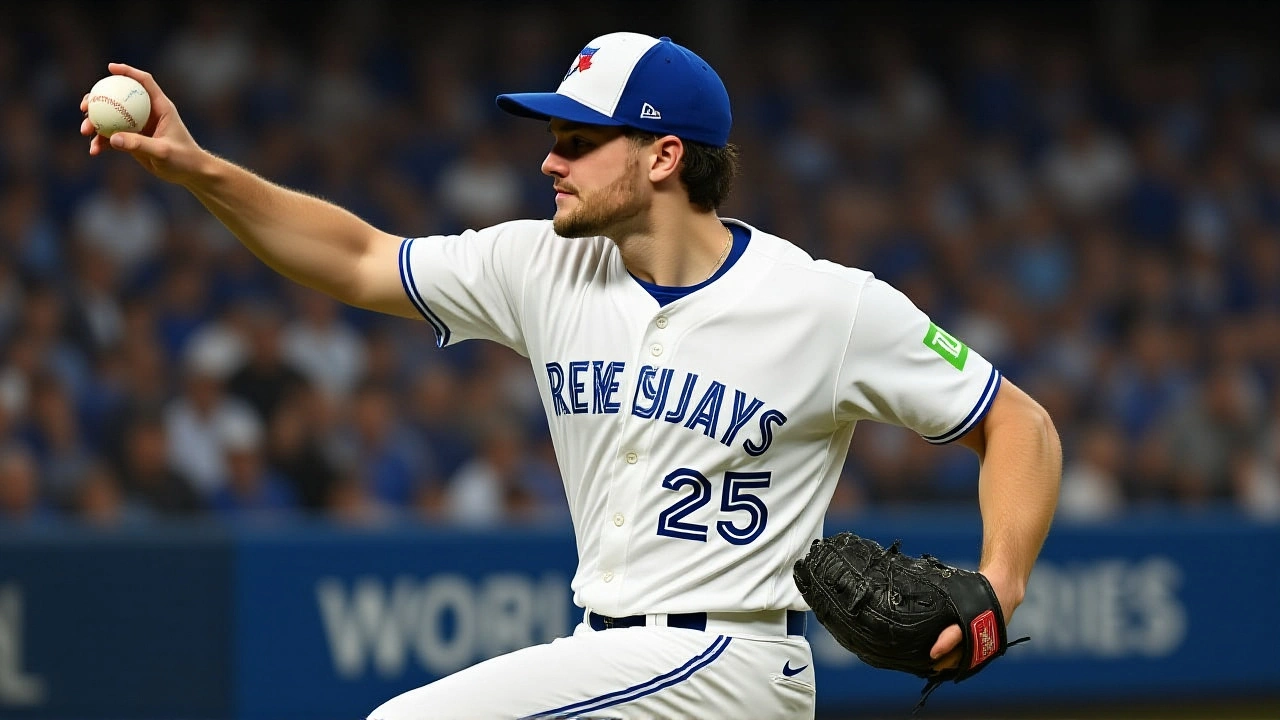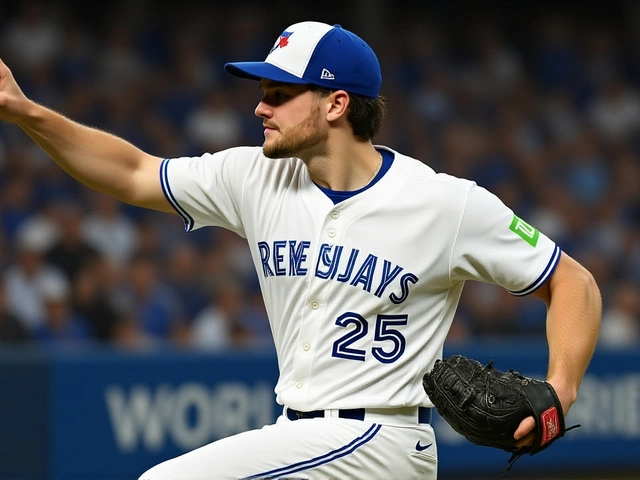When Trey Michael Yesavage, the 22‑year‑old right‑hander from Tampa, took the mound at Rogers Centre on Friday, October 24, 2025, the atmosphere crackled with the kind of nervous excitement usually reserved for a championship debut.
Yesavage, the 20th overall pick in the 2024 draft, became the second‑youngest starter in World Series history, trailing only Ralph Branca’s 1947 appearance. The decision, announced by John Schneider, manager of the Toronto Blue Jays, was a calculated gamble: give veteran Kevin Gausman an extra day of rest while forcing the defending champion Los Angeles Dodgers to face a pitch that had barely been seen in a World Series setting.
Why Yesavage Got the Ball
The rookie’s résumé reads like a lightning‑quick rise through the minors. Starting the season in Class A Dunedin, he climbed to Triple‑A Buffalo by August, logging 91 pitches in his first major‑league start on September 15 against Boston. By the time the postseason arrived, he had logged four playoff starts—more than his three regular‑season outings.
Statcast data from the 2025 season showed his splitter produced a 57.1% whiff rate, the highest among pitchers with at least 100 innings. That weapon helped him post a 1‑0 record with a 3.21 ERA in September, striking out 16 in 14 innings while walking seven.
The Game Unfolds: Pitching vs. Hitting
Yesavage opened the night with a bang, fanning Shohei Ohtani on three pitches. "It’s my goal to strike out everybody I face," he later said, smiling as he recalled the early strike‑out.
He settled into a four‑inning stint, allowing just two runs. The Dodgers, led by right‑hander Blake Snell, kept the game close, but the Blue Jays offense exploded in the sixth. A nine‑run inning— the most in franchise postseason history—capped by Addison Barger’s historic pinch‑hit grand slam, pushed the score to 11‑4.

Splitters, Stats, and Strategic Matchups
Both Toronto starters lean heavily on the splitter. Gausman threw 1,138 splitters last season—376 more than any other pitcher—limiting opposing hitters to a .181 average. The Dodgers, however, ranked fourth in run value against splitters, with Freddie Freeman and Mookie Betts posting sub‑30% whiff rates.
- Yesavage’s split‑rate: 57.1% whiff (2025)
- Gausman’s split‑rate: 1,138 attempts, .181 BA against
- Dodgers’ split‑rate: fourth‑most run value in MLB
- Blue Jays’ 9‑run inning: highest postseason inning for the club
Analyst Adam Ottavino noted that the rookie’s unfamiliar arm could “start L.A. off‑balance.” Meanwhile, pitching coach Pete Walker emphasized the extra rest for Gausman, a move that could pay dividends in Game 2.
Reactions from the Dugout and Broadcast Booth
After the final out, Schneider praised his young ace: “He handled the pressure better than anyone could have imagined. Giving Kevin an extra day was worth it.”
Dodgers manager Dave Roberts stayed measured, reminding fans that his rotation remains deep and his bullpen, though historically wary early, can adapt quickly.
On the air, Sportsnet’s JD Bunkis and Ottavino dissected the splitter dynamics, noting that the Dodgers’ hitters will likely sit deeper in the zone against Yesavage’s version of the pitch.

What Lies Ahead for the Series
With a 1‑0 lead, Toronto now faces a dilemma: stick with the rookie’s momentum or revert to a veteran arm. Schneider hinted at a possible rotation shuffle—Gausman, Max Scherzer, or Shane Bieber could take the ball on Saturday.
The Dodgers will counter with Yoshinobu Yamamoto for Game 2, hoping his fastball‑splitter combo neutralizes Toronto’s explosive offense.
All eyes will be on how the two teams adjust to each other’s splitter tactics, a quirky subplot that could define the rest of the series.
Frequently Asked Questions
How does Yesavage’s performance affect Toronto’s pitching strategy?
The rookie’s strong start gives Schneider flexibility. He can either ride the confidence boost and keep Yesavage in the rotation, or give Gausman the ball on short rest to preserve the split‑handed advantage. Either way, the splitter becomes the centerpiece of Toronto’s game plan.
What makes the splitter such a potent weapon in this series?
Both Yesavage and Gausman generate a late‑fall velocity drop that fools batters’ timing. In 2025, splitters induced a .181 batting average league‑wide, and against power hitters like Freeman and Betts, they suppressed slugging to under .60, making the pitch a decisive factor.
Who are the key hitters the Dodgers must watch out for in Game 2?
Toronto’s lineup still boasts heavy hitters such as Vladimir Guerrero Jr. and Bo Bichette. Their ability to adjust to splitters will dictate whether the Dodgers can contain the offense after the six‑run surge.
What does this win mean for the Blue Jays’ franchise history?
The 11‑4 victory marks Toronto’s first World Series win since 1993 and features the first pinch‑hit grand slam in series history. It also adds a young home‑grown pitcher to the list of World Series starters, a narrative that could inspire future drafts.
When is Game 2 scheduled and where will it be played?
Game 2 is set for Saturday, October 25, 2025, at Rogers Centre. The Dodgers will send left‑hander Yoshinobu Yamamoto to the mound, while the Blue Jays will announce their starter later in the day.

